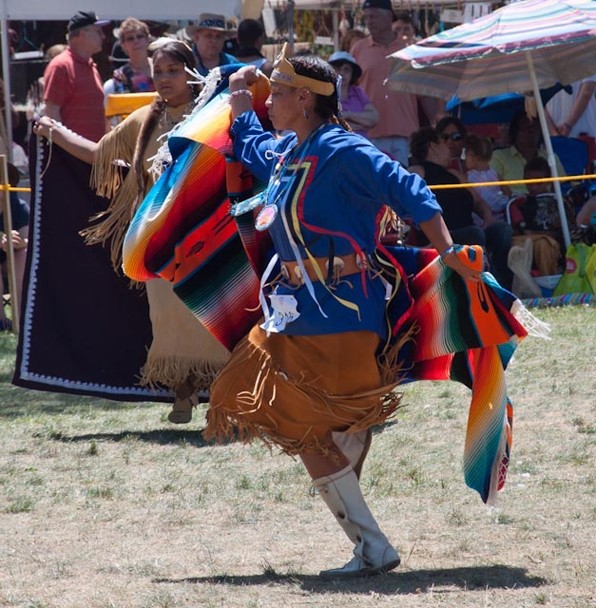CAMARILLO — When the Chumash people lived on the land now occupied by CSU Channel Islands (CSUCI), healers routinely collected native plants such as sage, mugwort and yerba santa to treat various ailments.
Beyond administering herbs, healing an individual was considered a community practice, requiring spiritual and family support.
Native American healing practices such as those practiced by the Chumash will be explored in a national traveling exhibit that will be on display at CSUCI’s John Spoor Broome Library through April 10.
“Native Voices: Native People’s Concepts of Health and Illness” is sponsored by the National Library of Medicine and National Institutes of Health and is toured through the American Library Association. The exhibit concentrates on Native American concepts of wellness, illness and cultural life and how they relate to community, spirit and the land.
“The University has ties to Chumash history so there is already native background at our University that students may not know about,” said CSUCI Associate Librarian Janet Pinkley. “This exhibit will expose our students to cultures of healing beyond Western healing practices and raise awareness of the local indigenous community.”
Two events will take place in conjunction with the exhibit. Colorful performances from CSUCI’s Danza Tlaloc Ollin Aztec dancers and a presentation from a Chumash tomol paddler will highlight an opening reception on Tuesday, March 5 at 4:30 p.m. Tomols are canoes built from redwood planks that were used by the Chumash to cross back and forth between the Channel Islands and the mainland.
University of Southern California Associate Professor of Pharmacology James D. Adams, Ph.D., will provide a presentation on Monday, April 8 from 4:30 to 6:30 p.m. in the John Spoor Broome Library Exhibition Hall called “Understanding Medicines Based on Chumash Tradition.”
Adams has studied Chumash medicine for 14 years with a Chumash healer, and plans to speak about the healing powers of native plants found in the area, and about the broader concepts of Chumash medicine.
“It’s about balance,” Adams said. “The most important things a healer can do is teach people how to live in balance. If you live in balance, your body heals itself. You love God, you love your family, you respect all people, work to improve your community and your environment. You take only what you need and keep yourself thin and strong.”
In addition, CSUCI’s Director of Facility Support and Chumash descendant and vice tribal chair of Barbareño/Ventureño Band Of Mission Indians Raudel Banuelos will display his personal collection of Chumash artifacts, handed down to him from his grandmother.
Included will be grinding bowls, a pestle, elderberry percussion instruments and a gourd rattle, to name a few.
“I like to educate people and let people know about the indigenous people who were here and are still on this land,” Banuelos said. “Our campus is definitely sacred. We have Round Mountain where we, the Chumash, would celebrate the winter solstice. We want people to never forget that the University sits on powerful and sacred land and it should be respected as so.”
The Ventura County Archaeological Society, Museum of Ventura County and the Stagecoach Inn & Museum will also loan artifacts for display. In addition, Chicana/o Studies faculty member Veronica Valadez will offer some of her indigenous Mesoamerican artwork for the exhibit.
Being chosen as one of the destinations of the traveling exhibit is an honor and a competitive process, Pinkley said, so she and fellow curator Laura Worden are delighted that CSUCI will have a chance to share this exhibit with the local community.
The U.S. National Library of Medicine (NLM) developed and produced “Native Voices: Native Peoples’ Concepts of Health and Illness.”
The American Library Association (ALA) Public Programs Office, in partnership with NLM, tours the exhibition to America’s libraries.
For more information visit: https://library.csuci.edu/about/news/native-voices-exhibit.htm.
About California State University Channel Islands: CSU Channel Islands (CSUCI) is reimagining higher education for a new generation and era. We are an innovative higher education institution that enables students to succeed and thrive – serving as an engine for social and economic vitality that provides the intellectual resources necessary for a thriving democracy. With more than 7,000 students, 1,200 employees and 14,000 alumni, CSUCI is poised to grow in size and distinction, while maintaining one of the most student-focused learning environments in public higher education. Connect with and learn more by visiting www.csuci.edu or CSUCI’s Social Media.


